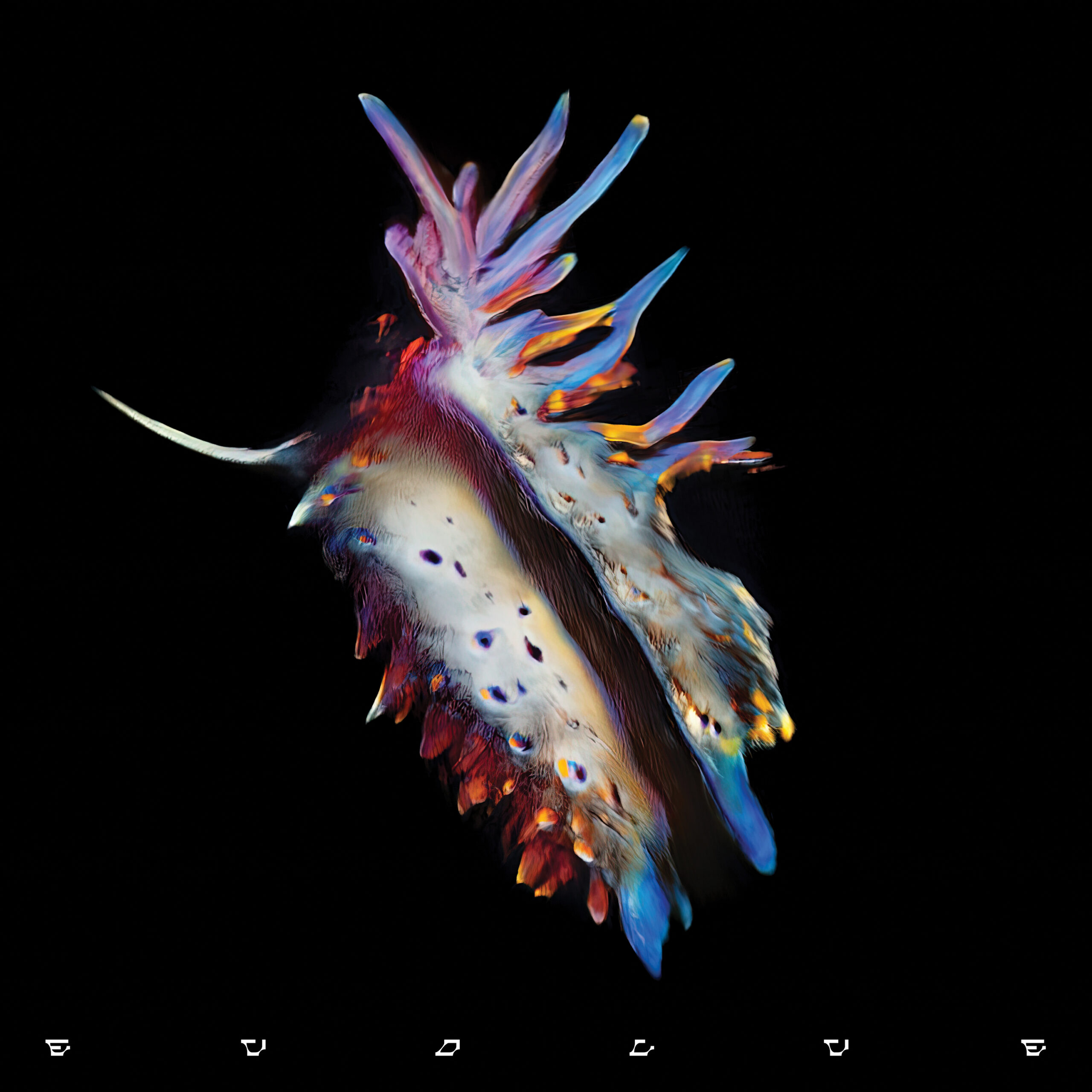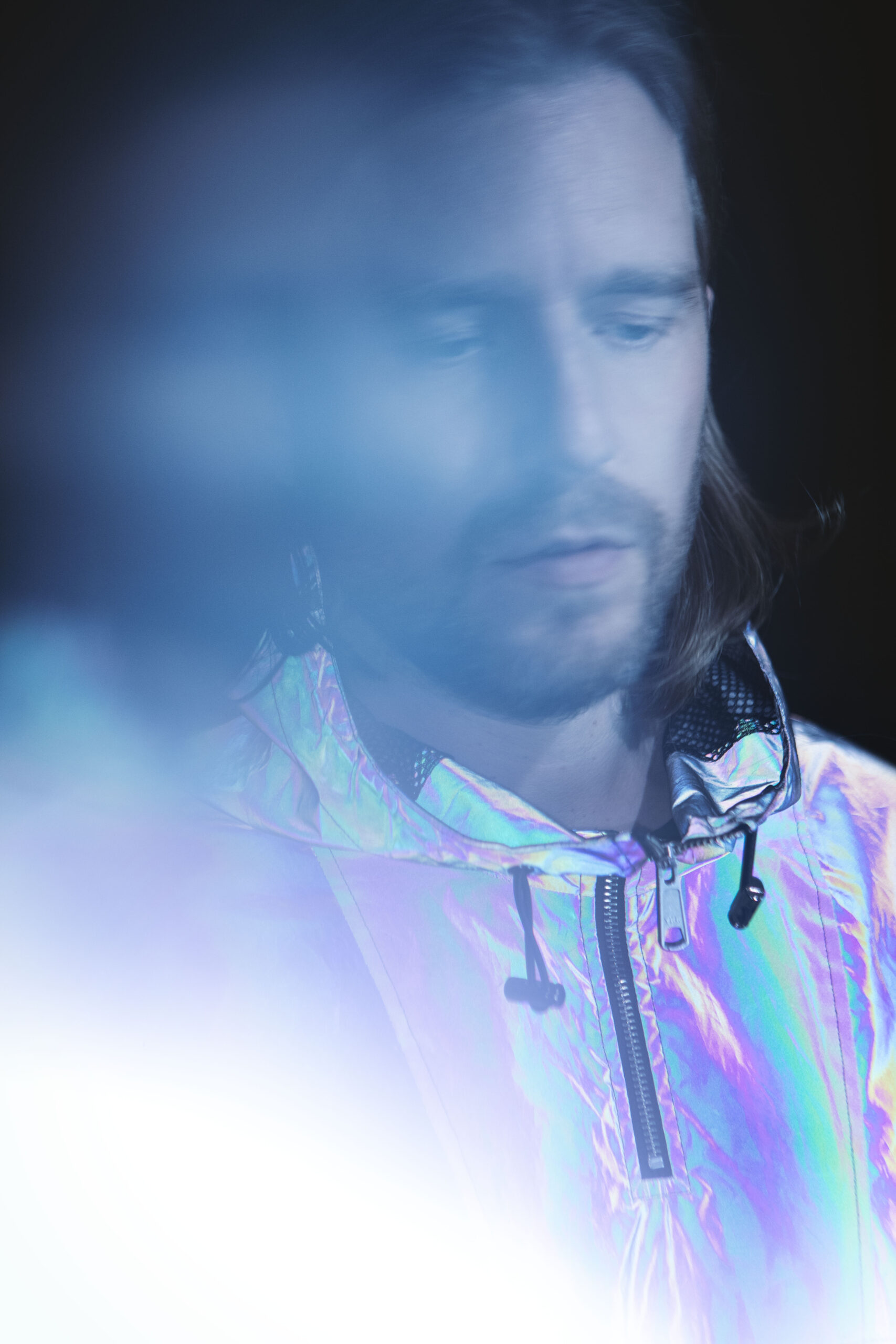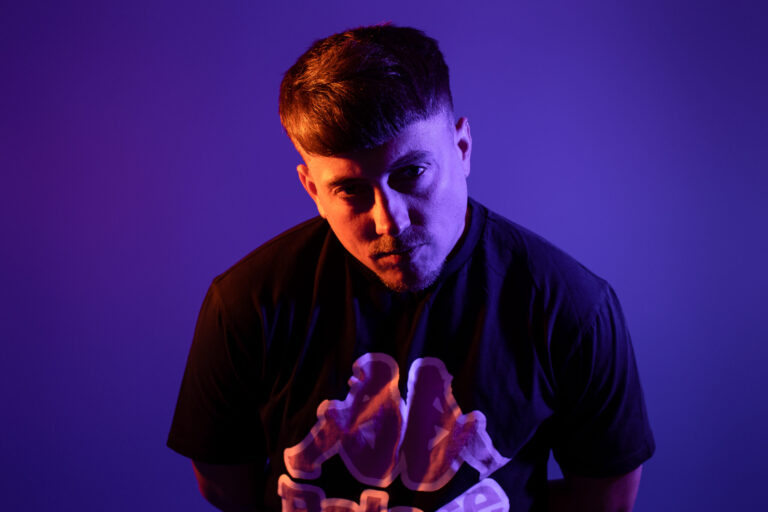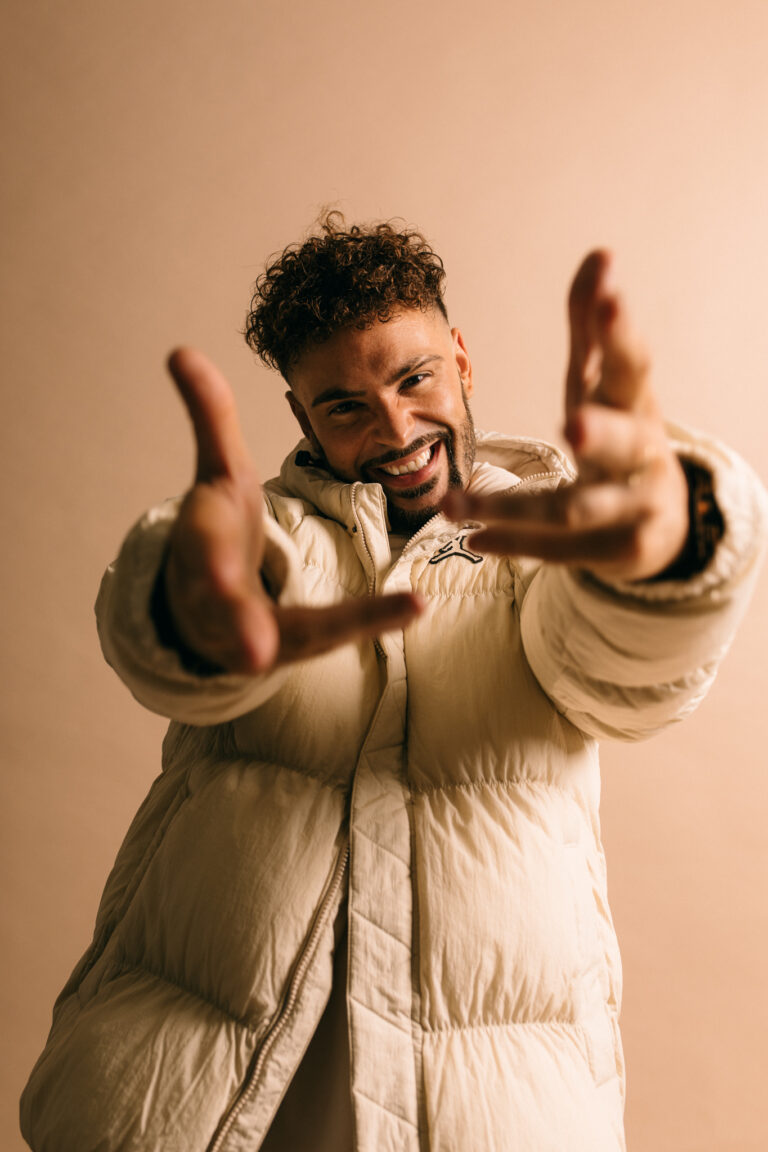At last, it’s here. Drum & bass powerhouse Sub Focus’ highly anticipated third solo album is out now – loaded with a spectacular mix of nostalgia-driven dancefloor tracks.
With over a decade since his first, self-titled album (and even longer since he started releasing music) Sub Focus – real name Nick Douwma – further solidifies his position as a consistent, prominent figure in the scene with his new LP entitled ‘Evolve’.
It’s this enduring involvement in dance music that led to the overarching themes for the album: taking inspiration from the 90s, recontextualising it for the modern day, and ensuring the traditional drum & bass sound is always at the core.
Whether it’s drawing on historic samples like with ‘Fine Day’, or bringing in old school heavyweights like Jonny L, Douwma ensures each track includes a nod or captures a vibe reminiscent of decades passed. His experience as a raver, witnessing first-hand the likes of Fabio & Grooverider in their rise to prominence, can be felt.
But this does not sound like it was released in the 90s. The album is titled ‘Evolve’, and indeed, Douwma takes those classic foundations and advances them. With refined production techniques learned over his career, he delivers 14 polished tracks that match his patented, pulsing dancefloor D&B sound.
Those who’ve been along for the whole journey with Sub Focus will recall, he’s no stranger to dabbling in adjacent genres like techno or hardcore. But with Evolve, his intent was clear – inspiration can come externally, but always bring it back to drum & bass. ‘It’s Time’ with Chicago legend Gene Farris is a perfect example – a unique track that derives from spoken-word house, but is sped-up and beefed-up for the D&B audience.
The majority of the tracks are kept to 174 bpm. But even with stand-out, lower tempo moments like ‘Secrets’ and ‘Don’t Want To Come Down’, the breakbeats are embossed. The two tracks mentioned also showcase some of the many notable collaborations, from LOWES and RHODES giving impassioned vocal performances, as well as from CamelPhat and Culture Shock linking up on production.
Evolve is a testament to Douwma’s allegiance to drum & bass and it’s foundations. In this interview, we reminisce on the inspirations for the 90s theme, chat through production techniques where classic meets modern, go deep on his involvement in the AI-assisted visual aesthetic, and plenty more…
I saw you played the final D&B set at Printworks last month – how was it to have those honours?
Yeah it was an amazing honour to be asked to do that. I was sort of desperate to be asked to play there one last time, having only played twice before. I actually played the second ever night there, which was a UKF night. Ever since, I’ve just been in love with that venue.
I did it back-to-back with Dimension, and we put a lot of time into prepping our set and having some exclusives. We also got to use some of their iconic visuals like the ‘running man’ and a few well known ones that they’ve used over the years. It was a super fun set.
Printworks teased that they’ll be re-opening in 2026 – but I’m a bit wary about getting too excited about it. Obviously a lot of things can happen with planning and noise restrictions. So I’m really hoping that it does come back, because it’s such a cool venue and we need great venues like that in the UK.

Having played Wembley, Printworks, and the biggest clubs around the world – what’s been your favourite place you’ve played recently?
Well the night before Printworks, I played an amazing warehouse venue called Kompass in Ghent. It has the most incredible space, with a cage in front of the DJ booth, and people were just hanging off it from all angles in front of me.
In general, I just love anything unusual when it comes to a venue or a festival. It’s inspiring – it makes you want to write music. I always visualise playing songs in certain places, for example, with ‘Ready to Fly’ (with Dimension), we wrote in the run up to our set at Arcadia. It’s always a big source of inspiration when you get to play those kinds of places.
You’ve been in the scene a long time now – how has clubbing changed from when you first started going out, to now?
Oh there’s so many things. When I started going to nights in the 90s, there were a lot of the more regular nights: weekly nights like Movement at Bar Rumba, Swerve at Velvet Rooms… A lot of the record labels had their regular nights too, like Renegade Hardware and RAM at The End – and these were the nights I went to a lot when I started putting out music on Andy C’s label.
But now I think people’s going out habits are much different – they don’t go out as much, but they go to bigger events.
There’s so many other things that have changed, too – I was walking through Coal Drops Yard (Kings Cross) just now, thinking about the mad nights that used to be at Bagleys, which was a big warehouse venue in these buildings. I remember hearing records there that you just wouldn’t hear for another year – you’d be trying to find out what it was that Jumpin’ Jack Frost or DJ Zinc played. You just wouldn’t know, so the whole scene was a lot more inaccessible, but in a way, it was cool, because it felt more exciting when you heard a record, not knowing when you were going to hear it again.
It had its charm, but I love the scene now too. I think back then there were so many barriers to discovery that aren’t there now. Sometimes you’d never find out the name of a tune you’d heard, which is kind of a shame. But now, you can seek out that dub that you’re into, and go and explore the artist and the label.
The theme of your new album is pretty heavily based on those early days – the 90s. What was the motivation to go with that angle?
It wasn’t super deliberate. When I’m working on music I’m trying to think ‘what excites me?’. On this album I often ended up sampling older records, like the vocals on ‘Fine Day’ for example – which is from a solo vocal record from the 80’s and later used by Orbital and Opus III in the 90’s. It’s one of those samples I’ve always had in my mind to try out. There were a lot of times like that where I’d recreate a sample, or make stuff sound like a sample from scratch.
There’s always this powerful nostalgia from the first type of music that you’re into. So I think I’m always referring back to that era a little bit. Because it’s the stuff I grew up listening to.
‘Fine Day’ is a great example that really captures that ‘old meets new’ sound. ‘Ready To Fly’ is another really popular one with those old school rave elements too…
For sure. With ‘Ready To Fly’ it was fun, because I was drawing inspiration from more like hard dance and happy hardcore – these kinds of fringe genres that I was exposed to in the 90s as well. I even got messages from some of those happy hardcore guys saying they love the new record, which was a nice full-circle moment.
I also worked with Jonny L on this album, and that was another full-circle moment of loving his music in the 90s and 00s growing up. He’s a bit of a legend in D&B, and a bit of an enigma. We’ve actually never met – but I got in touch with Nick Hawkes who used to run XL Records (who Jonny L was signed to back then), and I got his email and we got chatting.
So a fair bit of 90s inspiration, but I’m always trying to combine this stuff with modern production, so that it’s not just a complete homage to the old school. I love building in the feeling of nostalgia into my tunes.
What sort of hardware, software, or production techniques were you implementing to achieve a 90s aesthetic?
There’s a lot. I bought lots of old gear, and I’ve become quite obsessive with hunting down the presets that people used for certain songs. The strings on ‘Fine Day’ are all from an 80’s sampler called an Emulator II that people used to use a lot at that time. At one point I was obsessively trying to find the string patch that Goldie used on ‘Timeless’, or using time-stretching on old AKAI samplers to create those distinctive metallic tonal breakbeat sounds. There’s so many times where I’ve been trying to hunt down different sounds. I really enjoy trying to piece together how all these old records that I love were made.
With ‘Ready To Fly’, we recorded the vocalist at around half speed, and then sped her up to give it that sample effect. We also actually recorded it on a really expensive mic, but we then found that the original recording on just a handheld SM58 was way better – so we ended up using the ‘bad’ mic, because it sounded more authentic to what we wanted.
And what sorts of things are you doing to bring it to the 2023 context?
Yeah I mean that’s all mixed with modern drum & bass production techniques, using a lot of synths like Serum and things. It’s trying to mix the two techniques that’s interesting – you’re not trying to recreate old songs from 20 years ago, you’re giving people a fresh perspective, and obviously you want it to work in a modern setting, so it’s got to sound really polished.
Yeah I think you’ve really done well to capture both sides. An interesting track I wanted to touch on is ‘It’s time’ with Gene Farris – how did this come together?
I’m a big fan of spoken word house music. I wanted to do a track like that, but in D&B tempo, and I’ve always wanted to work with one of those guys like Gene Farris or Green Velvet.
The idea started, again, with trying to visualise the type of music I want to be playing at Circular Sound. I originally had the word ‘London’ in the track, and I thought that would be amazing to play that for the first time at my first Circular Sound gig at Printworks.
I was really trying to channel artists like Chemical Brothers – where you have a moment where the visual is literally a character speaking to you in the audience. I love those moments where you’re watching an electronic act play, and there’s amazing synchronicity with the visuals. I’m a big fan of Bicep as well and I’ve worked with Zak Norman on my shows for years who also does all of their visuals too. These are the types of shows and the feel I’m sort of trying to emulate in D&B with Circular Sound.
Do you get involved quite heavily in the weeds of putting the visuals together?
Big time. A lot of the first branding for Circular Sound was all done on this old video game console called a Vectrex. It’s got a black and blue screen which is this specific type of CRT monitor that has very smooth lines. You can find them second hand and mod them to turn them into oscilloscopes to display sounds on screen.
So you put sounds into this TV screen essentially, and then record what happens on the screen. Depending on what sounds you put into it, you get different shapes and things.
I’ve also been getting into 60s liquid light shows recently – where you use these concave pieces of glass that you lay on top of each other, and you put different types of liquid in-between the glass. You can create interesting shapes with how the colours mix together. It’s a technique that bands in the 60s would use to do live visuals – they would do it in a very analogue way on an overhead projector, and project it live onto the band that was performing.

What about the album cover visual?
So I’ve been using AI quite a bit for visuals. With the Evolve album cover, we created that by putting close-up photos of sea-slugs called Nudibranchs into an AI generator – and they came out with these crazy different images.
I worked Mat Maitland and Claudia Raphael from Big Active on the design – they sent me the animations of the sea slugs morphing, and immediately after I saw them I thought, we have to call this album Evolve – because you could see these shapes adapting and evolving in front of your eyes. At times some of the shapes that came out looked like the building blocks of other life forms – either they were really alien, or they looked like brains, hearts or lungs. It was cool, I felt like there was some natural geometry that was being channelled through the AI. It’s something I’ve been quite fascinated with lately.
We also got sent this incredible fan-made AI video for ‘Vibration’ recently, which is like a short history of dance music:
I’m really excited with the possibilities of what AI can do – and also somewhat scared of it as well. There’s a danger of it taking over some creative avenues, and I think it’s a very interesting ethical dilemma that we are all wrestling with.
I think there’s a good opportunity for AI to be used in a respectful way, but there are many ethical questions, like how they are trained, and having proper compensation for peoples art being used as part of AI datasets. The possibilities are very exciting – I mean, when you think about trying to make a music video of the equivalent to this, it would cost you millions. Realising these ideas that would otherwise be impossible is amazing.
Yeah I also find it equally exciting and frightening – particularly as a writer.
I know, yeah – I feel the same: it’s definitely artists, writers, producers, creators who it concerns heavily. We are at a relatively sweet spot I think where AI programs still need intelligent input to create anything meaningful, but who knows how far it will go.
It’s definitely very polarising and having posted that video on my socials, there’s some quite mixed comments on it. I think some people find AI inherently sinister and it’s an interesting debate, it’s fascinating to talk about what is happening with it.
I totally agree. It also feels a little meta to be chatting about AI in this interview – considering it used to be this sort of pop-culture obsession back in the 80s and 90s. Which reminds me about a thought I had about the album cover visual and font, that it makes me think of the film ‘Alien’.
Haha. I mean that’s not deliberate at all. The designers and I came up with the concept together, when I saw the images I thought it was amazing, but possibly slightly grotesque. I had a bit of a wobble as to whether it was something people might find a bit unappealing, but Mat encouraged me to go with it. I’ve come to like the way it’s slightly challenging, and how it’s quite strange and unusual, and that’s a good thing.
You’ve been in the game a long time now – did you ever see drum & bass taking you this far when you got those first tunes signed?
No, not at all. Back when I started with Andy C, I was just happy to put a vinyl record out, you know? That was my ultimate goal.
It was a bit later that I realised I wanted to do this on a bigger scale, and I started to become more ambitious. I’ve had a really great time in my career, because it’s been a really gradual increasing progression.
In the last few years, and particularly with this album, I’ve been doubling down on making and playing exclusively D&B. I definitely went through a phase in my mid-career where I was excited about making other genres. I still like to do that, but with this album I really tried to make everything sound cohesive, and feel like everything had a breakbeat and is related to D&B – it’s all from the same continuum kind of thing. So I was very mindful of that feeling of ‘coming back’ to drum & bass with this album.
I feel very proud of the whole genre and its heritage. It’s kind of amazing how you can play a record from 20 or 30 years ago. It’s amazing it’s got that history. It’s also so cool seeing a lot of the artists I loved when I was first getting into this, still going strong. And then all of the new-comers – it’s an incredibly vibrant scene at the moment. There’s some incredible new jump up producers, I’ve been really feeling Sota at the moment, Bou, Hedex… And then there’s amazing liquid being made from guys like Pola & Bryson and Justin Hawkes. It feels like a great time in the scene at the moment with all the diversity and strength in depth.
Can you recall any lessons in recent years when it comes to production or DJing as a career?
There are certainly lessons I’ve learnt along the way. When I started with RAM records, there were a lot of things I picked up from various people: Pendulum and Chase & Status who I came up at a similar time with, and most of all Andy C who was an amazing mentor early on. Andy C was always telling me, because at the time I was making pure instrumentals a lot, that my tracks needed to have some kind of unique element: a vocal hook, or a speech sample – it needed to have something to differentiate it from other instrumentals. I think that was a really good lesson.
There’s also certain things I’ve picked up that I really try and push when I’m DJing – I try to have a mix of impact and journey. There’s a real charm to delayed-gratification, that I think sometimes is a bit lacking from drum & bass mixing. Sometimes it’s all loads of drops in a row – which is exciting, but for me it’s also important to have long builds. I think that comes from me being really into house and techno, and other genres where there are a lot more progressive builds and longer structures.
When you look back on your older works like X-Ray, Druggy, or Join The Dots – what do you think of those tunes?
I’m generally really proud of my earlier stuff. They’ve mostly aged quite well. There’s certainly a few of them like Airplane, Rock It, Timewarp… that I still feel really good about. It’s a really amazing thing making music, when you go back and listen to these songs they remind you so strongly of a time in your life, I guess that’s true for the listener too.
It’s nice revisiting them as a producer because you’re not so close to them. When you’re working on music, there’s a sweet spot for every track that you make – normally I make a track and play it a few hundred times before I wear it out a bit too much. But coming back years later, you have a fresh perspective on it. You can enjoy it again.
In the studio, when you’re working on music you’re hearing it on loop, so you’re hearing it thousands of times. I used to use this technique where I pitch it way up or way down – and it kind of allows you to re-hear the track in a different context. It’s quite weird that, that technique has now become this TikTok phenomenon – like you often get sped-up or slowed-down versions of songs as a totally separate product on Spotify or whatever. Because people are just playing around with tempos on social media. I found that a funny development, because I used to just do it for my own enjoyment.
I remember doing that too, when I got my first decks.
Yeah sometimes it sounds really cool! So much music comes from happy accidents, and I’m always trying to engineer some of those weird semi-errors in the studio because sometimes they lead to a cool thing.
Definitely. A lot of people I interview bring up this technique actually – dropping 174 down to 140, and turning it into a dubstep track for example.
Yeah big time. With ‘Ready To Fly’, we thought, ‘what happens if you just speed it up times-two?’ And suddenly it sounds like this incredible rave sample.
Sometimes you do a ‘wrong’ thing and it sounds really right. The whole beginning of drum & bass is a story like that. Guys like Fabio and Grooverider were playing breakbeat records – looped breaks like the Amen break – over house and techno, and it was creating this whole new thing by playing these breaks at the wrong speed on the turntable. I guess there was this whole feedback loop between them and the producers, and producers hearing that and picking up on it. I just love the way this whole genre almost came about by experimentation and accident. It can spark all these amazing ideas.


